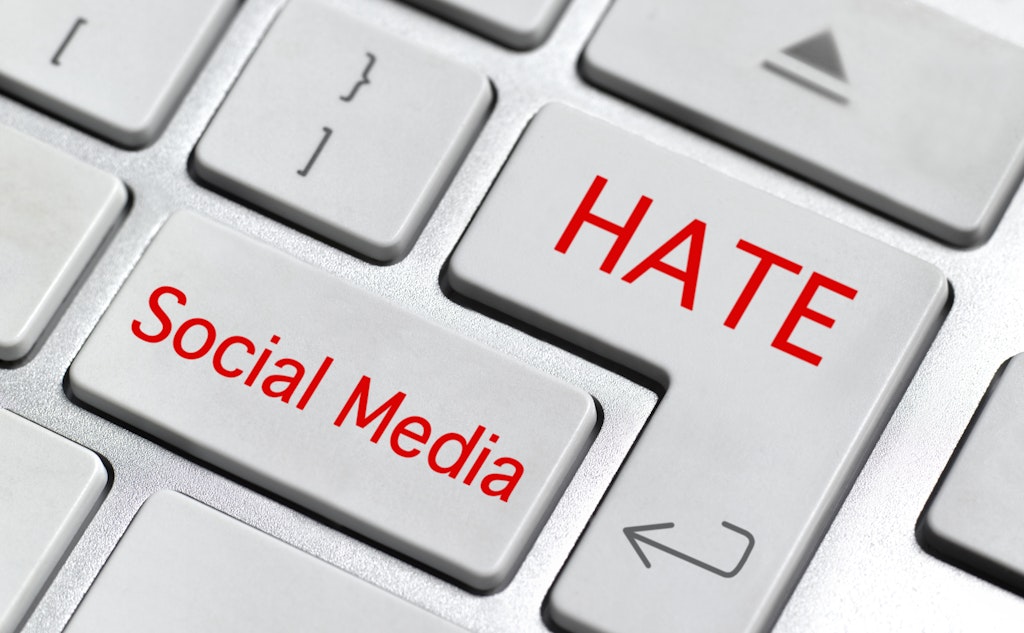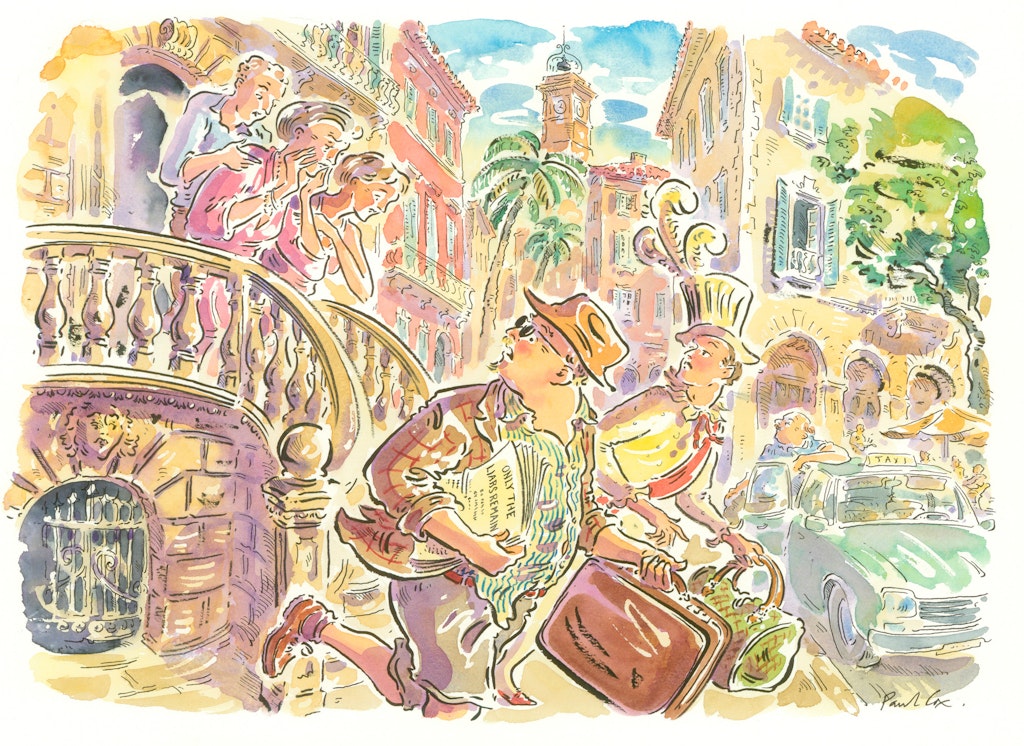Breaking taboos with clay
Jo Bartosch interviews ceramicist Claudia Clare, whose uncompromising work has upset the censorious art world
This article is taken from the July 2023 issue of The Critic. To get the full magazine why not subscribe? Right now we’re offering five issues for just £10.
There are few things more unsettling to the decolonised dinner party bores who run the art world than a 61-year-old lesbian who, in her own words, “has fuck all left to lose”. Particularly not one who’s prepared to get lawyered-up to protect freedom of expression.
Claudia Clare is a ceramicist. And the exquisite pots she creates tell unpopular stories, often about the ugliest parts of human nature. Clare lampoons the illiberal leftists’ trinity of acclaim for Islamism, prostitution and gender identity, and crucially refuses to abide by the “stay in your lane” creed of identity politics. Yet she is no reactionary.
“Feminism,” she reflects, “is the thread that unites all my work. There is no point in demanding rights only for the women who look like me — the women’s movement must see beyond borders.”
In June this year, Clare won a £10,000 settlement from the Craft Potters Association and the University of the Arts London after she was disinvited from a long- standing engagement. She had been booked to talk about her work exploring the lives of women in prostitution. Weeks before the event Clare was told her presence might provoke a protest, potentially putting “the show itself under threat”. The money from the settlement was donated to a service for women in the sex industry, but her victory is merely the latest in what for Clare has been a decades-long fight against silencing by public institutions.
The first state censors who came for Clare were Iran’s ayatollahs. In 2009, she was invited to exhibit a collection of her pots at the Museum of Contemporary Art in Isfahan. A Farsi speaker with an adopted Iranian family, Clare was supported by the gallery who rejected a governmental edict to shadow her during her visit. In response, the Iranian Foreign Office withdrew her visa.
It is perhaps unsurprising that she got under the beards of the ayatollahs
It is perhaps unsurprising that she got under the beards of the ayatollahs. Yet a year later she began to feel a similar sense of the haram creeping into Britain’s secular spaces. In 2009, she noticed a curator in a London council-run gallery seemed “nervous”. “I finally teased it out of her; she was terrified that a big, hairy, scary Muslim man might get upset because I’d made a piece called Princess Hymen. It was primarily about the virgin body and hymen reconstruction, which is carried out in the UK.
“The curator thought it might be perceived as offensive to Muslims. Yet every society has taboos around the female body and that was a big part of what I was trying to say.” The exhibition proved so popular its run was extended. “The feedback from visitors was amazing; I was particularly touched by the comments from Turkish women who said it was the first time they felt connected to a work of art,” Clare said.
But the following year she was told Princess Hymen was being removed from an exhibition in a gallery run by Bradford Metropolitan District Council. “I fought back and got the pot reinstated, but they decided to hide one side of it. The gallery got a torrent of complaints from the audience about not being able to see the whole piece … The ironic thing is, so far as I know not one Muslim complained.”
Clare refused to stop making the work that mattered to her, and she continued to face veiled accusations of bigotry. In 2016 she had a jug removed from the “Ideas Worth Fighting For” show at the People’s History Museum in Manchester. “The curator was concerned that there might be an image of the prophet Muhammed on the jug and assumed that all Muslims would be offended. But if they’d done any homework about the populations of Manchester, they would have known that a substantial proportion are Shia, and Shia Muslims do not prohibit imagery of the Prophet.”
Clare was unsuccessful in her attempt to fight the censors and since then the chokehold of censorship has tightened. Some gallery owners have rescinded invitations due to her stance on the sex industry, others because she has the temerity not to believe that people can change sex. Ultimately, her resolutely feminist view that women deserve neither to be “disappeared” under veils nor into the earth, sold as objects for profit or colonised by men’s fetishes, puts her beyond the bounds of decency by which most public galleries abide.
Despite her frustration, Clare has some sympathy with the censors. In her early years as a ceramicist, she felt constrained by the “solidly masculine” art world culture. “Women were tolerated, so long as they adopted the same approach as men. Beauty was everything and narrative was faintly disgusting. Politics had no place in art and anything remotely feminist was just a grubby manifesto.”
When ideas around decolonisation and cultural appropriation emerged which seemed to challenge the status quo, Clare was an early adopter. “As a teenager I remember visiting the Ashmolean Museum and being perplexed by the labels. I would look at ancient Egyptian pots and the text next to it would read ‘1930’ with a British bloke’s name. It took me years to work out that what they were naming was the archaeologist and the date they discovered the work. To begin with there was a buzz in learning about the cultures, histories and people buried under inaccurate, colonialist labels.
“But today decolonisation has turned into lifeless box- ticking. Once things lose their spirit and become bureaucratic, that’s when the pious lecturing tone enters. People are well intentioned, but they still tend to think that ‘minorities’ are a homogeneous group.”
Feminist art has a bad rep, conjuring images of kaftan-wearing women with dangly earrings painting with menstrual blood. Yet within the feminist fold, art is dismissed as an indulgence, removed from the realities of front-line work supporting survivors of men’s violence. But to Clare it is vital.
“The second wave generated a huge amount of written feminism, but feminist art was pushed out. Part of the reason was that a lot of feminist art of the 70s was very abstract and tended to be dominated by white, middle-class feminists.The black feminist art of the 80s brought a refreshing shift. They brought back figurative art, which I adore because I love storytelling.”
Arguably, the culture shift that allowed blossoming of the arts outside of the white “malestream” has metastasised in the online world. Today, every social media “like” or retweet is taken as evidence that a person might put the vulnerable at risk by dint of having haram opinions. The solution, according to state-sponsored galleries, is to cut out what Clare calls “the taint”. “Now artists are being shoved out because of what we think, not because of what we make. And we are under constant surveillance, both from our peers and institutions.”
“Cancellation is such a weak little word,” says Clare. “It doesn’t describe what really happens: the ostracisation, the bullying and hounding, as well as the actual rescinding of invitations and removal of work. Whether it happens in Iran or the UK is irrelevant — censorship is always about institutions claiming to protect impressionable audiences from dangerous ideas — stepping between the art and public to control what audiences see.
“At the beginning of my career I faced quiet censorship. A sneering and shutting down. Today it is more overt, and more aggressive. The common denominator is that feminist art, anything which speaks of women’s experience outside of a prescribed narrative, remains haram.”
Enjoying The Critic online? It's even better in print
Try five issues of Britain’s most civilised magazine for £10
Subscribe














